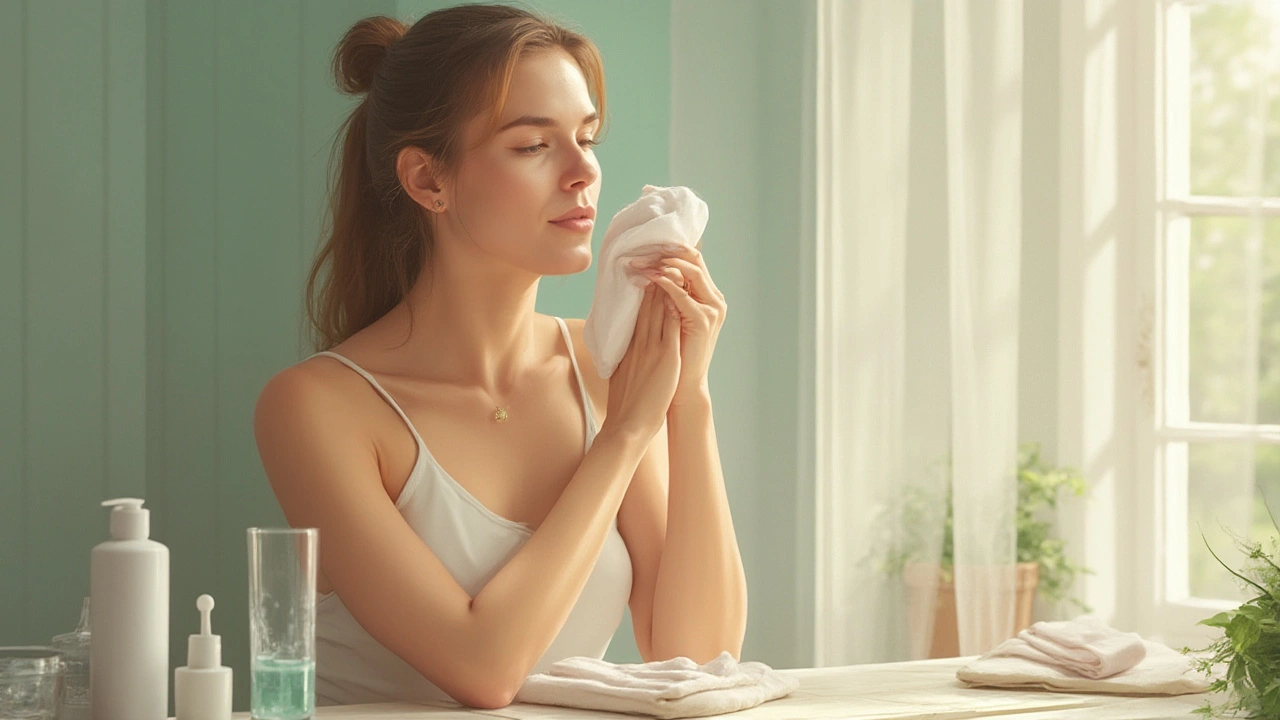After-Sun Care for Rosacea: Practical Tips for Calming and Protecting Sensitive Skin
Sun exposure isn’t just uncomfortable for people with rosacea—it can kick off a flare-up that lasts for days. If you’ve ever stepped outside and come back with red, burning skin, you know the struggle. Rosacea-prone skin reacts differently than ‘regular’ sunburn, so the usual after-sun lotions can sometimes make things worse. Here’s what actually works (and what doesn’t) after a sunny day.
First off, start with cool—not cold—compresses as soon as you get inside. A wet, soft cloth held to the flushed areas for 10-15 minutes can help calm things down. Skip ice packs or super-cold water since they might irritate sensitive rosacea skin even more.
Moisturize right away with a gentle, fragrance-free lotion. Look for options that have ceramides or hyaluronic acid. Avoid products with alcohol, menthol, or witch hazel—these can sting and make redness worse. If your skin feels hot all afternoon, try a spritz of thermal spring water or a no-nonsense calming mist (always check labels for extra ingredients that can trigger your skin).
Avoid thick, sticky ‘after-sun’ gels with lidocaine or benzocaine. These are made for sunburn, but with rosacea, they can actually cause more burning or even an allergic reaction. Stick with simple, non-comedogenic moisturizers. If you do want to try something new, start by patch testing on a small spot first.
If you need a little extra TLC, some doctors recommend a light layer of 1% hydrocortisone cream for severe redness, but don’t use it for more than a day or two, and avoid stronger steroids unless your dermatologist gives the green light.
Don’t scrub or exfoliate, even if skin is peeling or rough. Gentle cleansing twice a day with lukewarm water and a mild, non-soap cleanser keeps things clean without stripping the skin. Pat skin dry, never rub.
Thinking about sunscreen for next time? Mineral sunscreens with zinc oxide or titanium dioxide are your best friend. Chemical sunscreens often irritate rosacea, but minerals create a physical barrier without stinging. Reapply if you’re outside, even for short periods.
Hydration matters, too. Drink plenty of water after sun exposure to help skin recover. Some rosacea patients find that slight dehydration makes flushing worse, so keep a water bottle nearby.
If your skin stays red or bumps start popping up after sun, don’t panic. Sometimes, it takes a couple of days for rosacea flare-ups to calm. If it gets worse or you see swelling or blistering, check in with your doctor—especially if you already use prescription meds for rosacea.
Skin care after sun isn’t a guessing game for rosacea patients. Stick with gentle, proven basics and stay consistent. Next time you’re planning to be outdoors, prep with a mineral sunscreen and a good hat so you spend less time soothing and more time enjoying the sun.
Best After-Sun Care for Rosacea: Dermatologist-Backed Ingredients & Tips
Discover after-sun care tips and gentle cooling ingredients that soothe sun-exposed skin without triggering rosacea flare-ups. Get dermatologist advice and product picks.
Read more
